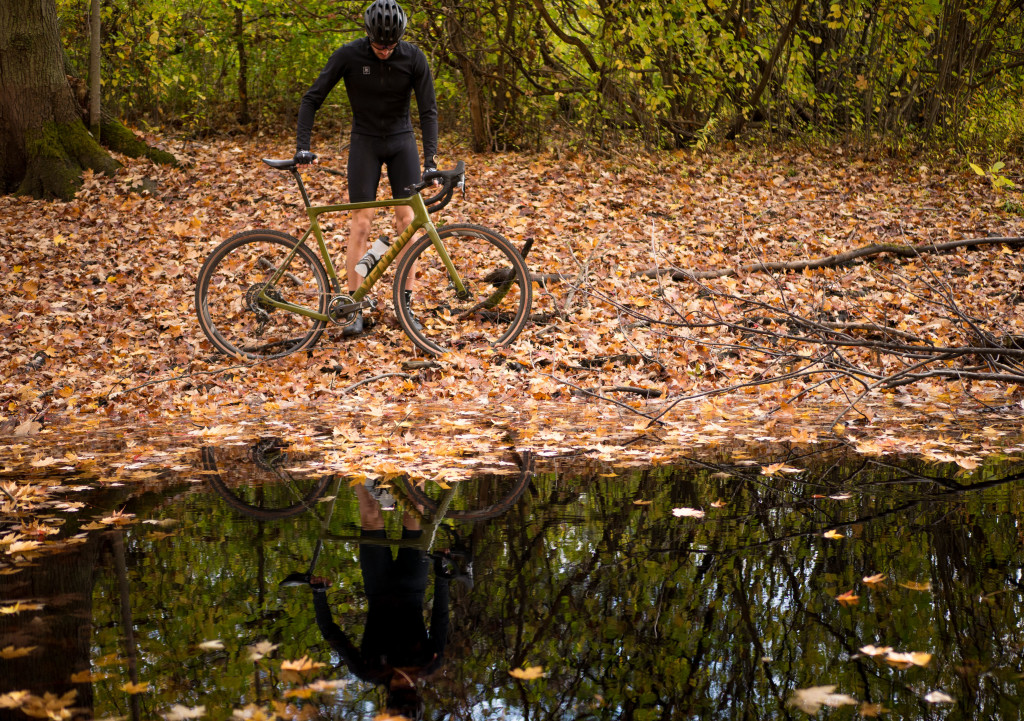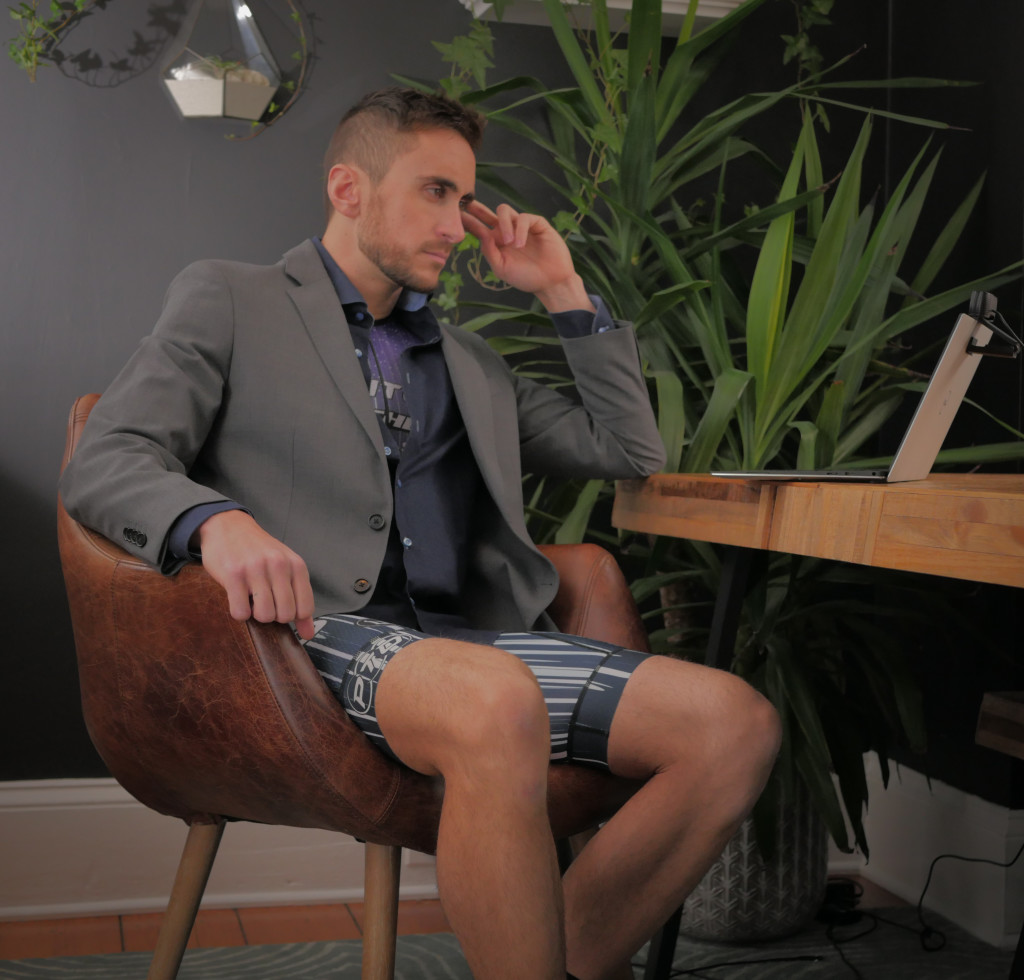Back by popular demand, here’s the latest edition of my pro triathlon budget, the series that pulls back the curtain on the esoteric business of pro triathlon. As far as financial reports go, I hope this one is at least as enthralling as livestreaming 17 hours of IRONMAN coverage.
One thing is for sure: no one is drawn to pro triathlon for the dough. From my rookie pro season in 2014 to a top-20 PTO ranking and top-5 TriRating last year, my income level progressed from “preteen babysitter” to “moderately successful accountant”. It took several years grinding away at triathlon to match my earnings potential in my previous job as an environmental science consultant.
I’ve made decisions throughout my adult life that prioritized autonomy, minimalism and simple living over material wealth. Even so, I was finally on track for a banner year at the bank in 2020. After years nurturing sponsor relationships and a lifetime building fitness, earning $150k to $200k from triathlon was within reach.
And then the pandemic blindsided me like a strung-out semi driver.
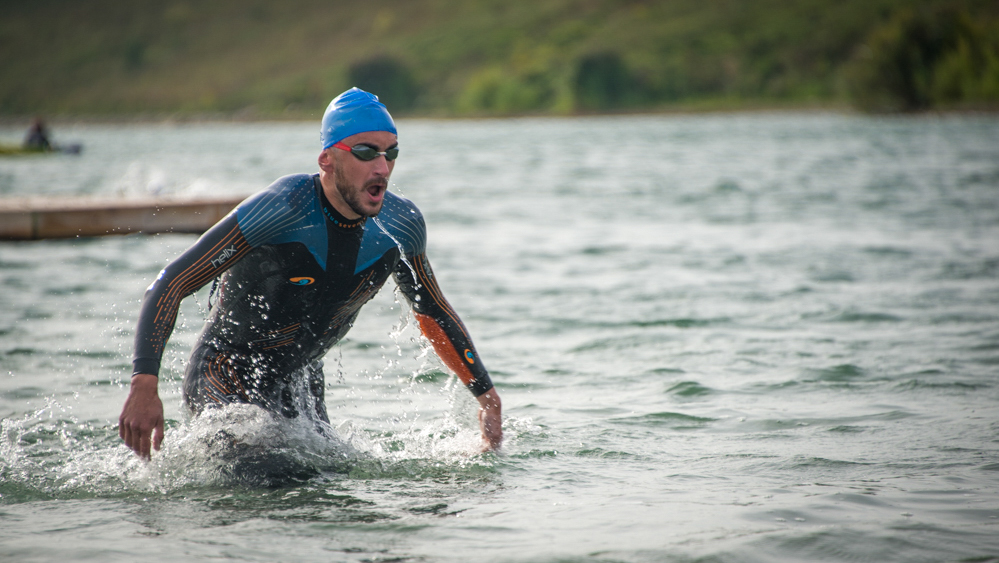 Photo: Sarah Purdy
Photo: Sarah Purdy
I feel privileged to have weathered this shitstorm better than many athletes and other folks. When international racing ground to a screeching halt, my earnings from prize money, bonuses and appearance fees were decimated. But thanks to sponsorship, my income only took a 30 percent hit compared to the past couple years. I’m extremely grateful that every single one of my sponsors stood by me. The pandemic would have hit my finances much harder earlier in my career before I had such solid sponsorship.
Unfortunately, the financial impacts of the pandemic on my career and the broader triathlon industry are still setting in. Race calendars are uncertain, travel is curtailed, many facilities are closed and the sponsorship landscape looks bleak. And yet, I closed out 2020 feeling uncharacteristically optimistic and more committed than ever to this offbeat career.
You can find my earlier budget posts below. Each elaborates on some different points. I skipped the sixth (2019) edition because the story was similar to the year before.
- My Fifth Year Pro Triathlon Budget
- My Fourth Year Pro Triathlon Budget
- My Third Year Pro Triathlon Budget
- My Second Year Pro Triathlon Budget
- My Rookie Pro Triathlon Budget
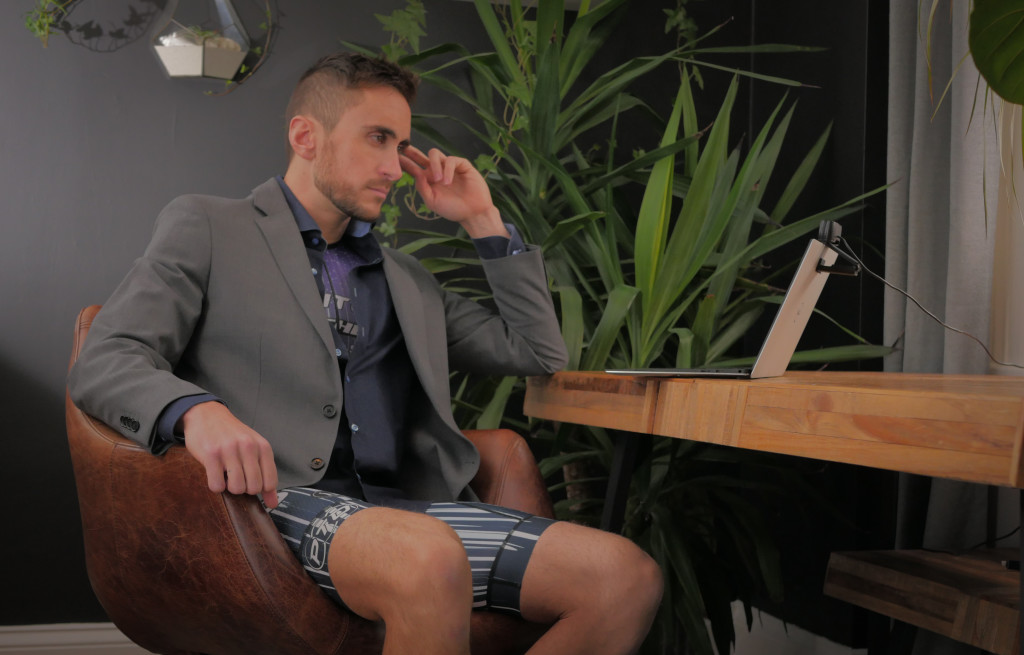
My 2020 Pro Triathlon Budget
Revenue, expenses and earnings before taxes from triathlon over my seven years as a professional are summed up below. I’ll give dollar figures in both Canadian and US dollars (converted at the average annual exchange rate) since the majority of my revenue and expenses are in US dollars though I live in Canada.
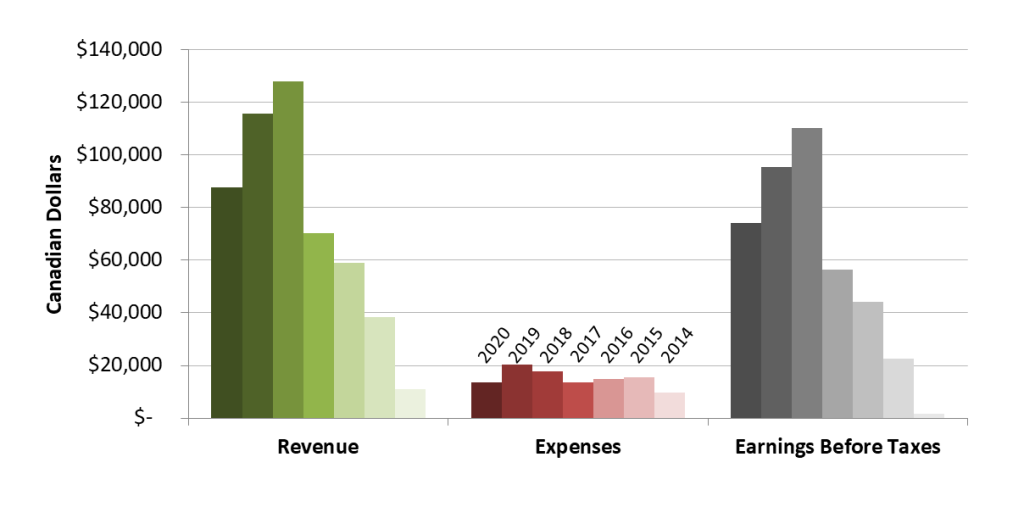
A detailed breakdown of my 2020 triathlon budget is shown below. Like previous budgets, this one strictly includes triathlon-related revenue and expenses. I’ll touch on my living expenses later on.
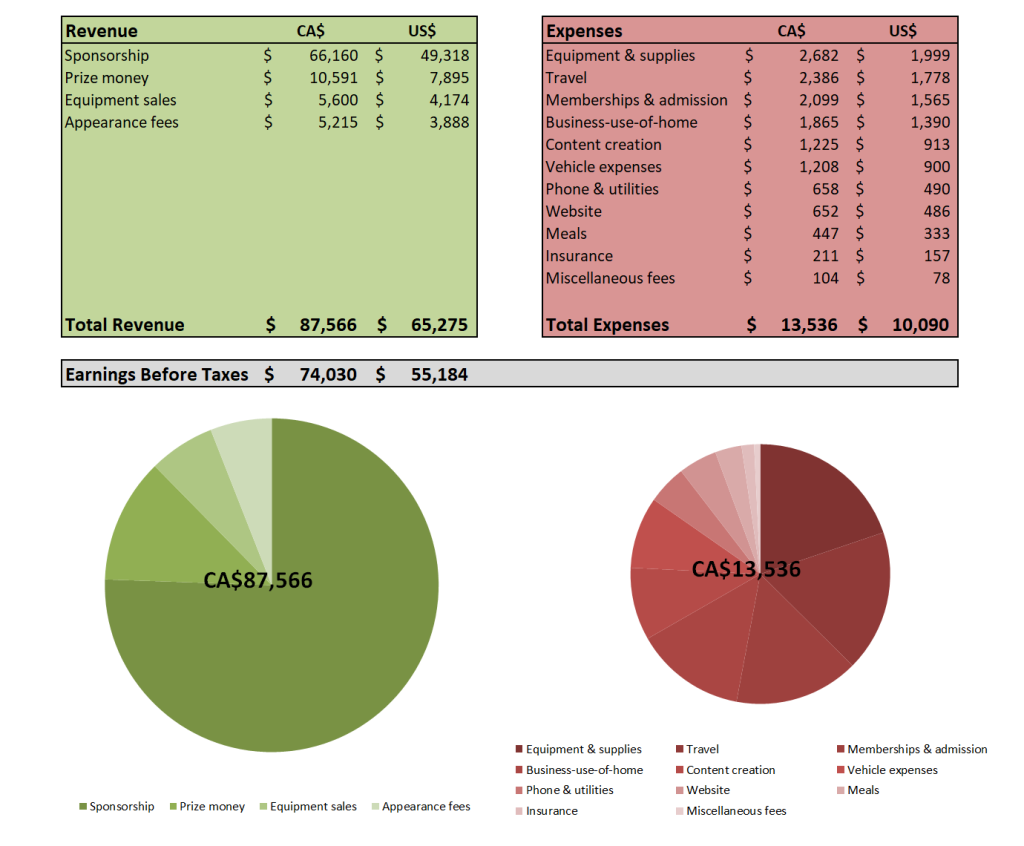
Revenue
Sponsorship
I feared the worst when most of my sponsors scheduled a call at the start of the pandemic. It was a relief to hear that all my contracts were safe for 2020. Unfortunately, the outlook for 2021 isn’t so rosy. I’m anticipating more attrition and turnover in sponsorship than every prior year of my career combined.
With racing on hiatus for most of the year, I scrambled to find other ways to drive value for my sponsors, such as pumping out more content than ever. I’m doubling down on this approach in 2021 with the launch of a YouTube channel. Now more than ever, simply being fast isn’t enough to earn a living in triathlon.
This year also validated my “diversified portfolio” approach to sponsorship. I apply the same time-honored principles to select my family of sponsors as my investment portfolio, using diversification to hedge against risk and volatility. By holding a mix of industry and non-endemic sponsors across different sectors, each with different compensation structures (e.g., base salaries, performance bonuses, travel allowances, equity, product), I’m partly insulated against inevitable ups-and-downs in my performance, industry trends and even black swan events like a global pandemic.
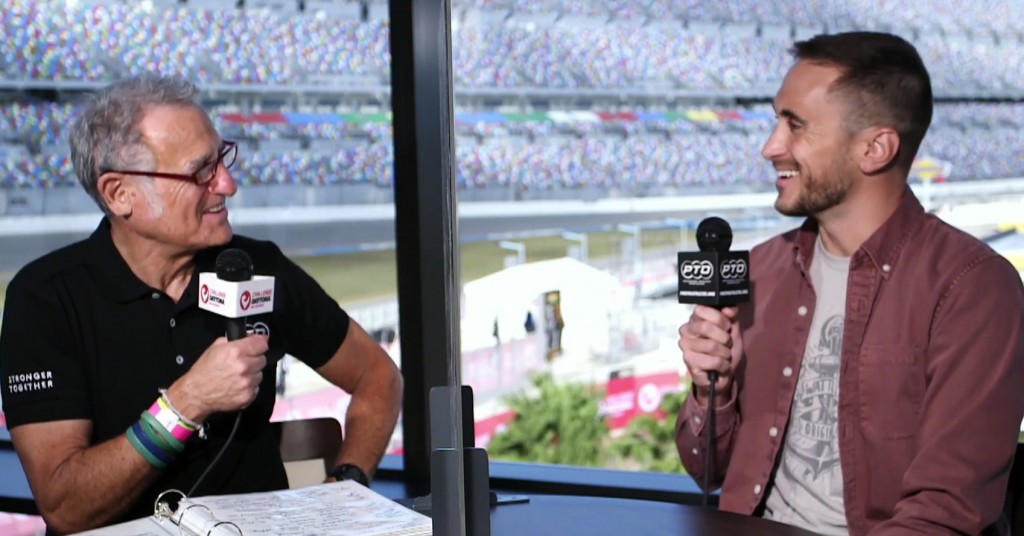 Breakfast with Bob at Challenge Daytona
Breakfast with Bob at Challenge Daytona
Prize Money
It was a rough year for prize money. Opportunities to race were few and far between, my form was well off 2018/2019, and the level of competition continued to advance at breakneck speed. A pandemic-ravaged race calendar forced me to race locally for most of the year and also to branch out into shorter formats (including my first draft-legal race).
The rise of the Professional Triathletes Organization has been a ray of hope in an otherwise dismal year for the sport. The unprecedented $1.15M prize purse and the decision to pay every athlete at the PTO’s first Championship event was a revolutionary development for our sport.
- 5th – IRONMAN Florida: US$4,000
- 21st – PTO Championship at Challenge Daytona: US$2,500
- 6th – Canadian Pro Triathlon Championship: CA$750
- IRONMAN VR primes: US$500
- 2nd – C3 Old School Pro Long Course Triathlon: CA$250
- 3rd – C3 Old School Pro Sprint Triathlon: CA$200
- 10th – IRONMAN 70.3 Campeche: $0
- Total: CA$10,591 / US$7,895
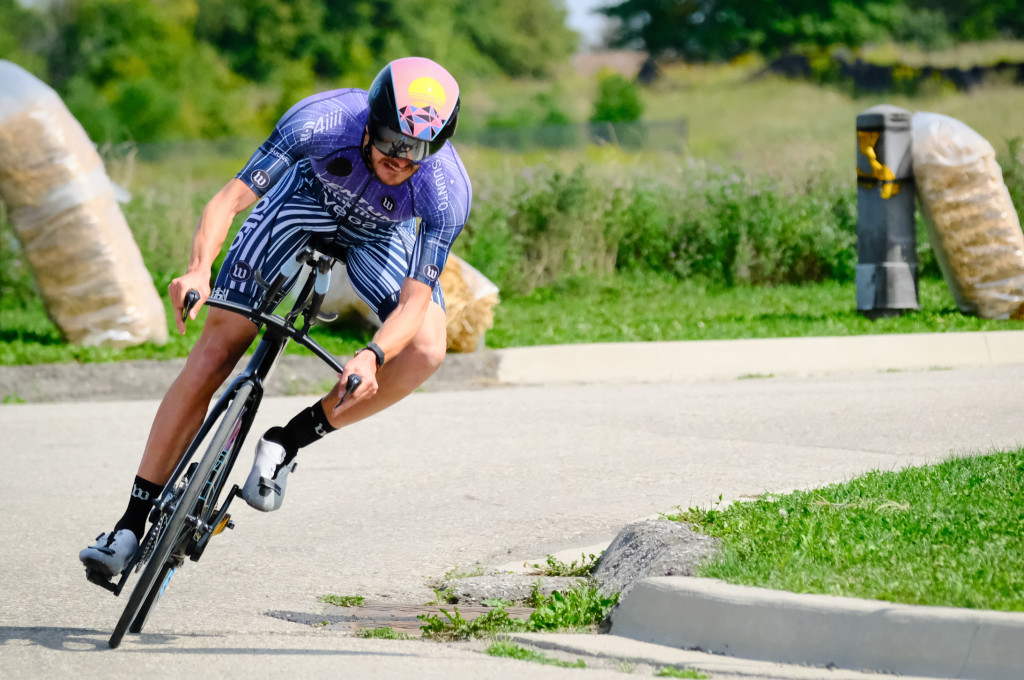 Photo: Trent Dilkie
Photo: Trent Dilkie
Appearance Fees
This category has been a relatively small revenue stream for me in the past, but 2020 would have seen major growth if only—you guessed it—it weren’t for the pandemic. The cancellation of several races I was targeting (including missing out on defending my title at IRONMAN Mont Tremblant) cost me over CA$20k in appearance fees alone, not to mention prize money and bonuses. Oof.
I scrounged together $5k through an assortment of online appearances and speaking gigs to supplement my other income.
Expenses
Triathlon Expenses
My business expenses remained on par with past years, which is to say, leaner than a Kona afterparty.
I no longer paid consulting or agency fees since I returned to self-coaching and self-representing at the start of 2020. I also continued to do all my own bike maintenance, accounting and tax prep. The only professional services I employed for my business were some content creation and website maintenance.
In a career so dependent on health, I’m fortunate to be both injury-resistant and covered by one of the better single-payer healthcare systems in the world. I no longer take my durability for granted after working through the only significant injury of my life in 2019 (achilles tendinosis). Over my career, I’ve spent a grand total of $215 on physiotherapy and nothing on medical services or health insurance.
I continued to bring my bookkeeping up to snuff and discovered that I’d been majorly underclaiming tax deductible business-use-of-home expenses. Busting out the tape measure, I calculated that the actual area of my home devoted to my triathlon business is conservatively 17%, much more than my earlier estimate.
Traveling to fewer races didn’t yield the massive savings you might expect. Travel expenses have typically been a minor item for me and are often offset by sponsors, homestays or race organizers.
There’s a fine line between being strategic with business spending and being pathologically cheap. I’m carefully evaluating what expenditures would further my career, such as investing more in consulting/coaching, content creation or the latest recovery gimmick (not!).
 PTO 2020 Championship at Challenge Daytona
PTO 2020 Championship at Challenge Daytona
Living Expenses
My living expenses were in line with previous years. Affordability remained comfy despite my reduced income. My savings rate (~62%) was actually higher than recent years as I finally stopped hemorrhaging money into my century home renovations.
At the start of 2020, I was already getting the itch to upgrade the modest downtown Guelph semi that I’d purchased three years ago. It felt cramped with my partner and I both running our businesses out of the house. I also craved a more inspiring training space than my grungy unfinished basement. Upgrading seemed justifiable, even if it meant reaching towards the limit of my affordability.
In hindsight, I’m relieved I stayed put! With a costlier house, the financial impact of the pandemic could have been a nightmare rather than an inconvenience. This near-miss helped reaffirm my commitment to minimalism and its accompanying freedom and peace of mind.
I continued to pay down my small mortgage (~CA$150k) at an accelerated rate, but made this debt a much lower priority given historically low interest rates. I’m grateful that I got a toehold in Guelph real estate before prices skyrocketed, but also dismayed by the growing affordability crisis in Canadian housing.
Related: My Pro Triathlon Diet
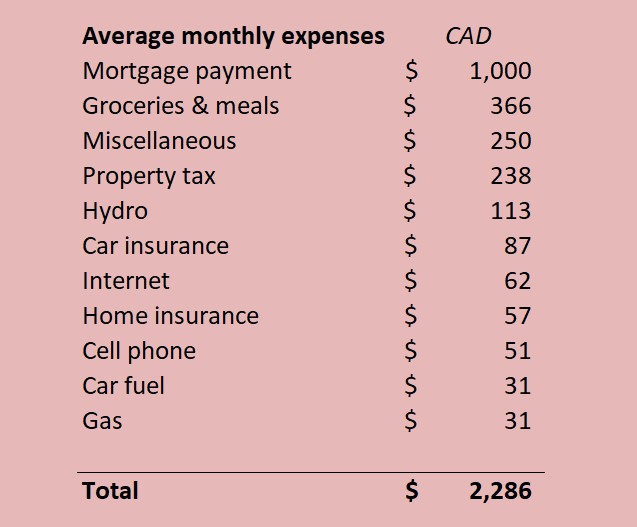
Concluding Thoughts
Sometime between my triathlon career taking off and renovating my first house, life reached a frenetic pace. At first, having so much on the go was exhilarating. But eventually, it became oppressive. I had a panicked feeling that the days were growing shorter and the passage of time was accelerating. After years defining my self-worth through my productivity and accomplishments, I had all but forgotten how to be still.
The pandemic came with its own set of stresses, but also a surprising plus; it stripped away much of the complexity. The pared-down life I was left with was shockingly pleasant at times. In this stillness, I found space for reflection. What was worth adding back into my life? What were my priorities?
Making a lot of money still isn’t high on the list. Nor becoming a social media influencer, building a coaching empire or even winning Kona. For now, I just want to live authentically, train purposefully and race fast.
